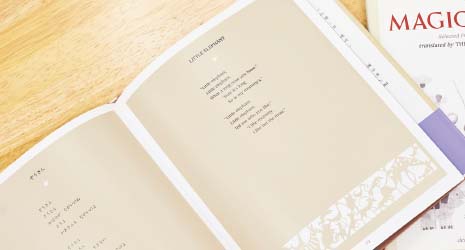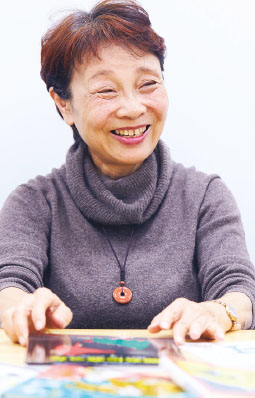Home > Highlighting JAPAN > Highlighting Japan February 2019 > Sharing Japanese Literature with the World
Highlighting JAPAN


Fantastic Realms: The Charms of Japanese Children’s Books
Yumiko Sakuma, president of the Japanese Board on Books for Young People, discusses the particular characteristics Japanese children’s books share, and how they are regarded throughout the world.
Yumiko Sakuma, president of the Japanese Board on Books for Young People (JBBY) and a well-known translator of children’s books, has a great deal to say about the many charms of Japanese children’s books and their place in the realm of literature.
Sakuma notes that each author and artist naturally has a distinctive style, but Japanese picture books tend to have a soft touch and humorous themes that garner popularity inside and outside Japan. Picture books are a visual medium, so they can easily overcome language barriers and gain international notice. Illustrators Suekichi Akaba and Mitsumasa Anno received the Hans Christian Andersen Illustrator Award in 1980 and 1984, respectively, proving that illustrators receive international acclaim sooner than writers aiming for the Author Award. “You could say the animation-like scenery of Akaba’s Sora, nigero is more Japanese-looking compared to traditional European picture books. However Anno’s appealing illustrations combine the charms of both Japanese and Western art,” Sakuma explains.
On the other hand, in Japanese children’s literature “there are many authors who perfectly capture the minute workings of a child’s heart and the landscape they see in their minds,” says Sakuma. “Japanese nonfiction books also tend to be carefully researched, and that accuracy is another defining trait. I’d like to see writers broaden their horizons to include more social and international topics, to make children aware of their role in society and show them a vision of the future, the way Western authors do.
“Many Japanese works are well worth spreading to readers outside Japan,” she adds, “but unfortunately not many are translated and published.”
Thanks to the proactive recommendation efforts of JBBY, however, authors such as Michio Mado (The Animals, 1994), Nahoko Uehashi (Moribito: Guardian of the Spirit, 2014), and Eiko Kadono (Kiki’s Delivery Service, 2018) have won the Hans Christian Andersen Award. Chinese author Cao Wenxuan won the award in 2016, so Asian authors have received the award three times in recent years.
The translator who must leap over language barriers and convey the fun of Japanese literature to readers across the world is essential. Her Majesty the Empress Michiko, for example, translated Michio Mado’s The Animals. “In translating poetry to English, you must be aware of the unique sense of the line lengths and the rhyme scheme. Empress Michiko has been writing picture books and translating poems for a long time, so Tayo Shima, who was a JBBY board member at the time and a fellow alumna of the University of the Sacred Heart, felt that she was the only one who could translate the book and sought her out,” explains Sakuma.
It was an exhaustive process, with the Empress considering not just the topic of the poems but also the visual balance, and carefully checking in with Mado himself along the way. “The translation was very well received abroad, and contributed greatly to his winning the Hans Christian Andersen Award,” Sakuma points out.
When asked about what Japanese works need to be more visible in the world outside Japan, Sakuma answers: “If the authors, translators and editors all broaden their horizons and keep their eye on books published inside and outside Japan, Japanese children’s books will change for the better. JBBY curates recommendation lists of children’s literature from all over the world to introduce Japanese readers to high-quality works from many countries and vice versa. We want to raise children who read these life-affirming books that show a variety of cultural values.”
© 2009 Cabinet Office, Government of Japan







